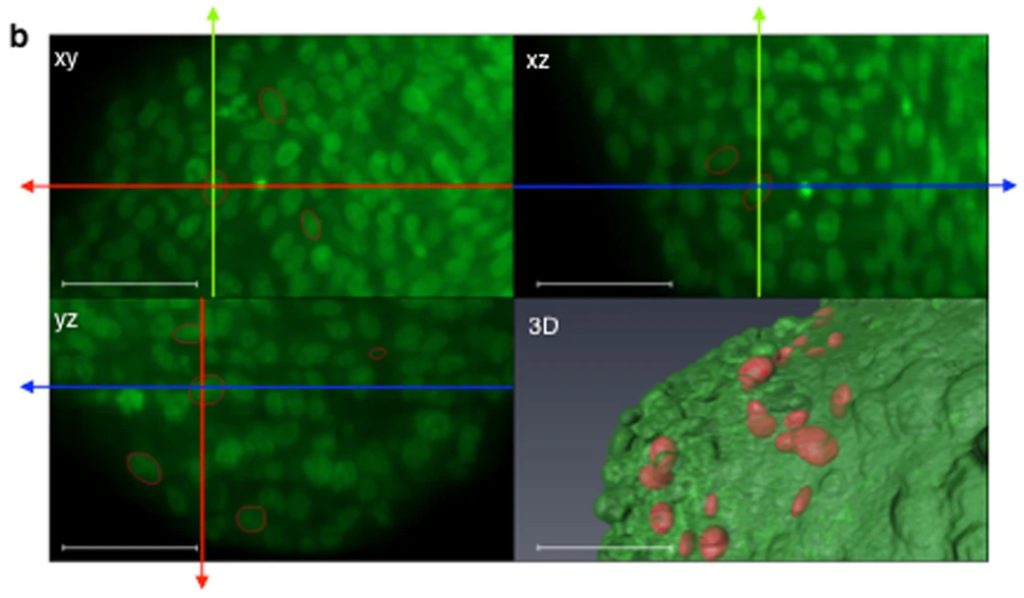Thermo Fisher Scientific › Electron Microscopy › Electron Microscopes › 3D Visualization, Analysis and EM Software › Use Case Gallery

Multicellular tumour spheroids are used as a culture model to reproduce the 3D architecture, proliferation gradient and cell interactions of a tumour micro-domain. However, their 3D characterization at the cell scale remains challenging due to size and cell density issues. In this study, we developed a methodology based on 3D light sheet fluorescence microscopy (LSFM) image analysis and convex hull calculation that allows characterizing the 3D shape and orientation of cell nuclei relative to the spheroid surface. By using this technique and optically cleared spheroids, we found that in freely growing spheroids, nuclei display an elongated shape and are preferentially oriented parallel to the spheroid surface. This geometry is lost when spheroids are grown in conditions of physical confinement. Live 3D LSFM analysis of cell division revealed that confined growth also altered the preferential cell division axis orientation parallel to the spheroid surface and induced prometaphase delay. These results provide key information and parameters that help understanding the impact of physical confinement on cell proliferation within tumour micro-domains.
For Research Use Only. Not for use in diagnostic procedures.